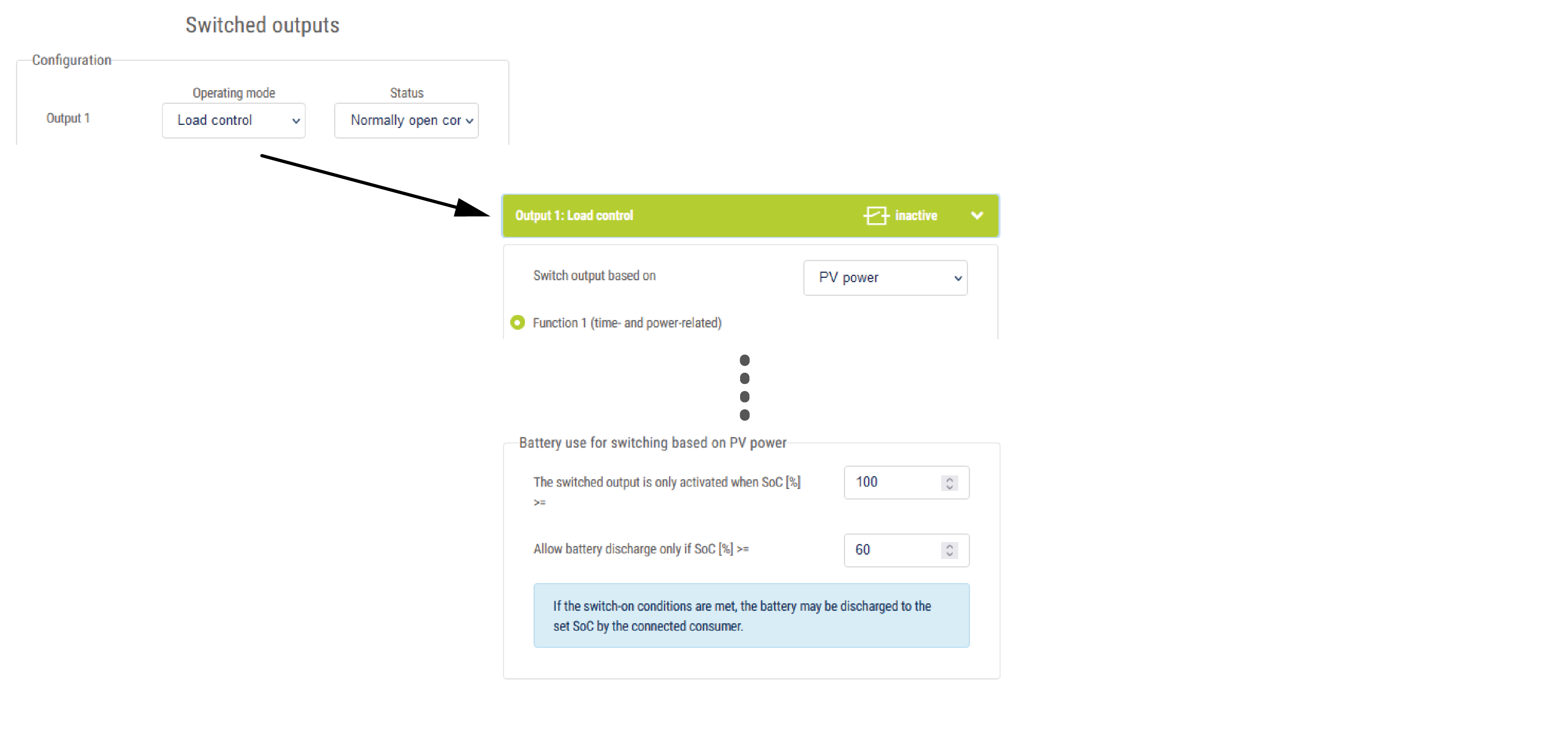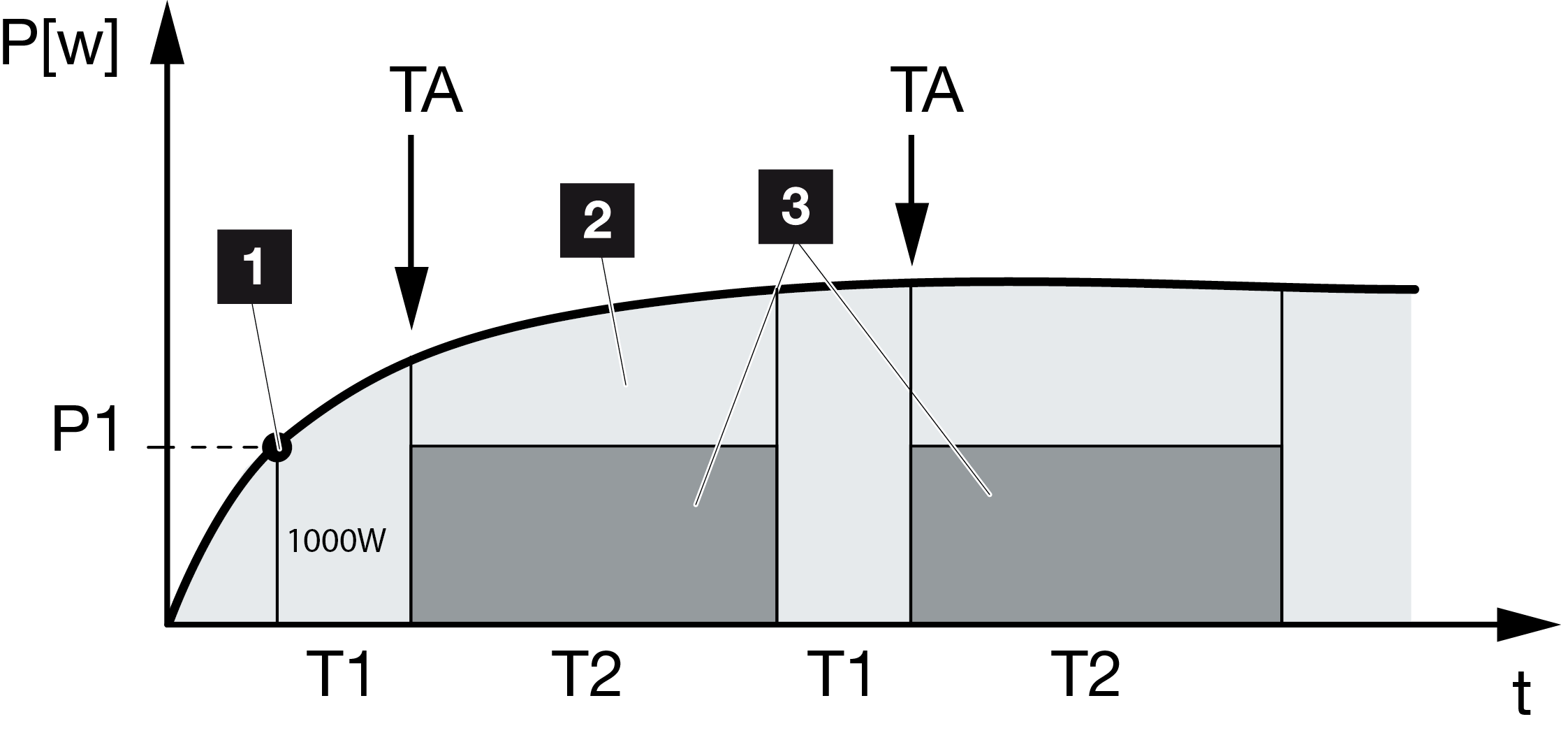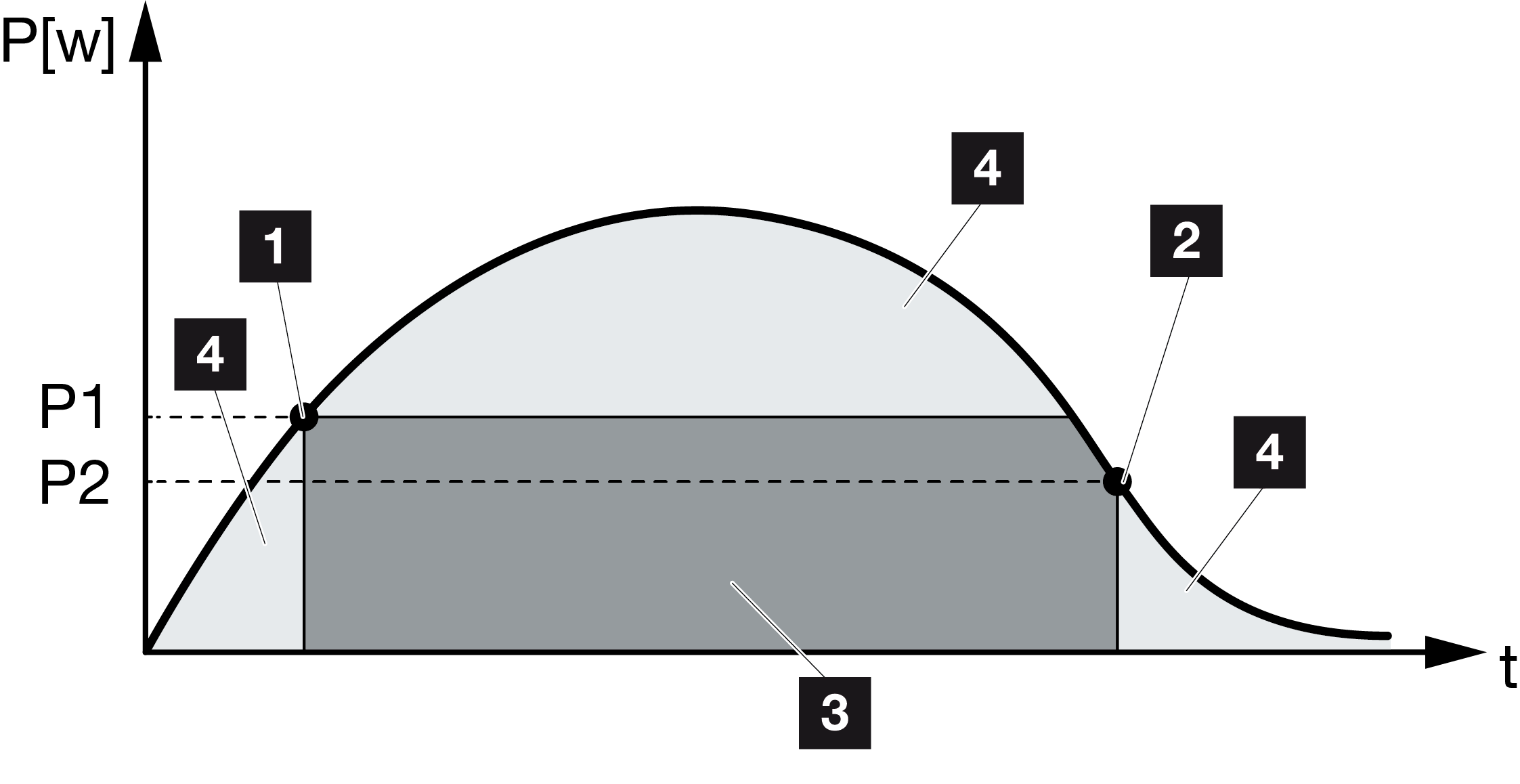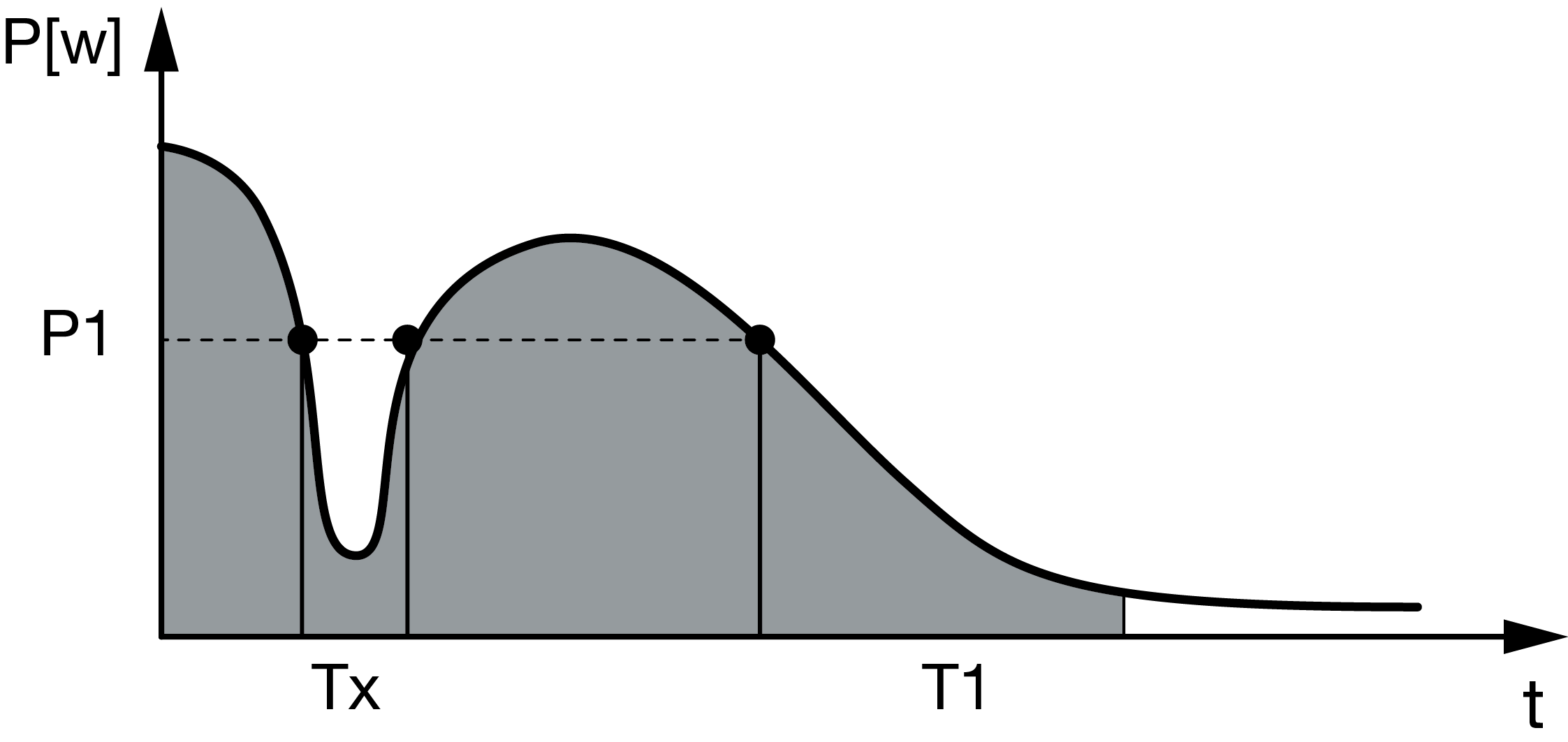Set up self-consumption control for load control
Switches on loads when conditions are set (e.g. PV excess).

- Select an output, e.g. 1, and the load control operating mode.
- Under Status, select whether the switch is closed or opened when the set conditions are met.
- Select the set output, e.g. 1, below and set the conditions.
- Select whether the switched output is to be switched at a specific PV power or grid excess .
- Choose function 1 or function 2.
INFO

You can find more detailed explanations regarding the selection of function 1 or 2 in the course of the chapter.
- Enter values for the function.
- Optionally activate the value for Leave switched output activated in event of power loss or fault using the checkbox and enter the time period.
- Optionally select Battery use for switching based on PV power.
- Click on "Save".
- The "Self-consumption control" function is active.
Function 1
Control of self-consumption by time
When a certain output P1 has been generated for a certain time T1.
The inverter remains in "Self-consumption" mode for the run time T2. Following the run time T2, the inverter ends self-consumption.
This is the end of the interval. This interval can be repeated several times with the "Activation" option.

|
1 |
Power limit |
|
2 |
Feed-in to the public grid |
|
3 |
Self-consumption via self-consumption contact |
P1: Power limit
This is the minimum power (in watts) that must be produced (e.g. 1000 W) before the consumer is switched on. You can enter any value from 1 watt to 999,000 watts.
T1: Period of stable exceeding of the power limit (P1)
The inverter must exceed the set power limit for this period of time (in minutes) before the consumer is switched on. You can enter any value between 1 and 720 minutes (= 12 hours).
T2: Run time
The connected consumer is switched on for this period (in minutes) when both of the above conditions have been met. You can enter any value between 1 and 1440 minutes (= 24 hours). The run time ends when the inverter shuts off. The run time is ended and not continued again if the inverter has not produced any current for three hours.
TA: Frequency of activation [number/day]
Number/day indicates how often self-consumption is activated per day.
Function 2
Control of self-consumption by output
When a certain output P1 has been generated (e.g. 1000 W), the switching contact is closed.
When the output P2 is not reached (e.g. 700 W), the inverter ends self-consumption and resumes feeding current into the grid.

|
1 |
Activation limit |
|
2 |
Deactivation limit |
|
3 |
Self-consumption via self-consumption contact |
|
4 |
Feed-in to the public grid |
P1: Activation limit
This is the minimum power (in watts) that must be produced before the consumer is activated. You can enter any value from 1 watt to 999,000 watts.
P2: Deactivation limit
The consumer is switched off when the power generated falls below this value.
Other options
Leave switched output activated in event of power loss or fault
With this function, self-consumption is only discontinued after the set delay time T1. In the event of power loss, fault (Tx) and failure to achieve the shutdown limit, the consumer remains switched on for the set time (T1).
If the fault period or the period of power loss is shorter than the set delay time, self-consumption remains activated.

P1: Power limit
T1: Delay time in the event of power loss/fault
Tx: Fault, power loss or failure of the inverter
Dashed area: Self-consumption active